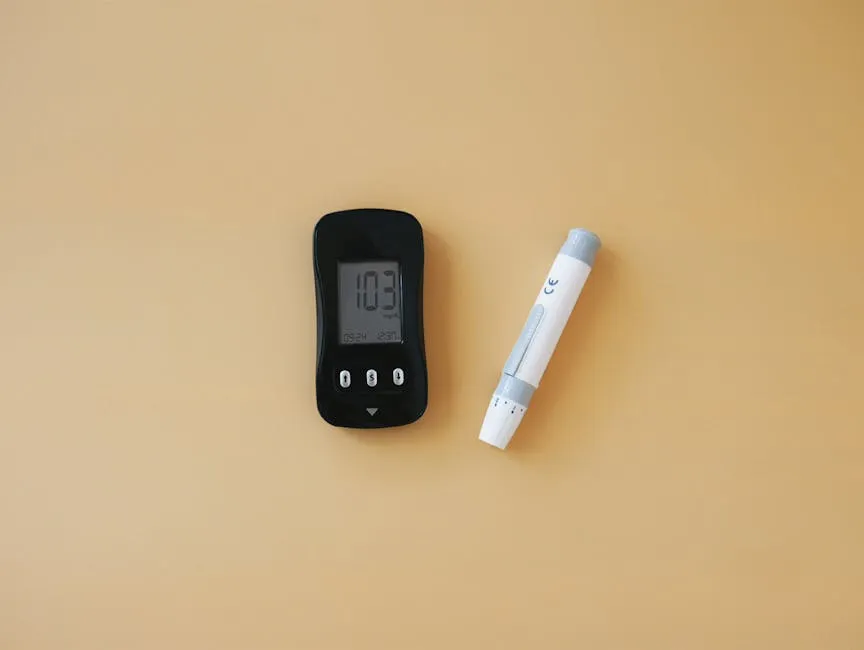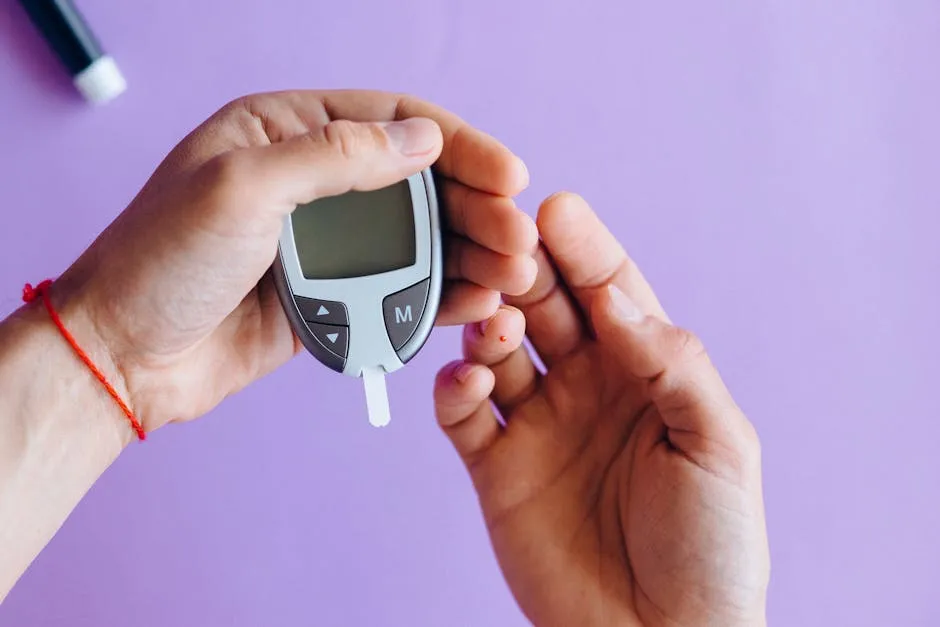Introduction
Monitoring blood glucose levels is vital for your health. This is especially true for those with diabetes and prediabetes. Understanding how these levels fluctuate can help you manage your condition effectively. A clear blood glucose levels chart makes it easier to recognize what constitutes normal ranges. In this article, we’ll break down essential information and provide practical insights to help you stay informed.

For a deeper understanding of statistical concepts that could aid in managing health data, check out an introduction to statistical learning with python book length.
Summary and Overview
Blood glucose, or blood sugar, is the main type of sugar found in your blood. It comes primarily from the foods you eat, particularly carbohydrates. Your body uses glucose for energy, especially for your brain. However, glucose levels can vary throughout the day based on several factors.
Diet, exercise, stress, and hormonal changes all impact blood glucose levels. For instance, after eating, levels usually rise, while they tend to fall during periods of fasting or exercise. It’s essential to understand the classifications of blood glucose levels. These include normal, prediabetic, and diabetic ranges.
Regularly checking your blood glucose levels is crucial for effective diabetes management. This practice helps you make informed decisions about your diet and lifestyle. Throughout this article, you will find charts and tables illustrating blood glucose levels based on age and specific health conditions. By familiarizing yourself with these levels, you can take proactive steps to maintain your health.

For those who want to ensure they are keeping track of their blood sugar levels accurately, consider a Glucometer Kit. Having a reliable kit can take away the guesswork and give you peace of mind as you monitor your levels.
Normal Blood Sugar Levels
Overview of Blood Sugar Levels
Normal blood sugar levels are essential for maintaining your health. These levels indicate the amount of glucose present in your bloodstream. Understanding these ranges helps you manage your health, especially if you have diabetes or prediabetes.
Fasting blood sugar refers to levels measured after not eating for at least eight hours. In contrast, postprandial blood sugar is measured two hours after eating. According to the World Health Organization (WHO), a normal fasting blood glucose level ranges from 70 mg/dL to 100 mg/dL. Postprandial levels should be less than 140 mg/dL for healthy adults.
It’s crucial to recognize these ranges because they serve as a guideline for diabetes management. Elevated or low blood sugar can lead to serious health issues. Regular monitoring empowers you to take control of your health. The Centers for Disease Control and Prevention (CDC) emphasizes the importance of knowing your blood glucose levels. Make it a habit to check your levels regularly and discuss any concerns with your healthcare provider.

Additionally, having the right tools can greatly assist in managing your blood sugar levels. Consider investing in Blood Glucose Test Strips. They are essential for accurate readings and can help you stay on top of your health goals.
Blood Glucose Levels Chart by Age
Normal Blood Sugar Levels by Age
Understanding blood glucose levels by age is vital for effective health management. Below is a chart summarizing normal blood glucose levels for various age groups, including children, adults, and older adults.
| Age Group | Fasting Blood Sugar (mg/dL) | Before Meals (mg/dL) | 1-2 Hours After Eating (mg/dL) |
|---|---|---|---|
| Children < 6 | 80 – 180 | 100 – 180 | ~180 |
| Children 6-12 | 80 – 180 | 90 – 180 | Up to 140 |
| Teens 13-19 | 70 – 150 | 90 – 130 | Up to 140 |
| Adults < 60 | < 100 | 70 – 130 | < 180 |
| Adults 60+ | < 100 | 70 – 180 | < 180 |

For individuals with diabetes, these targets may differ. According to various studies, maintaining these levels helps prevent complications. For instance, people with diabetes should aim for tighter control. Collaborating with a healthcare provider can help tailor these targets to your specific needs.
Monitoring blood glucose levels by age can significantly impact health outcomes. If you have questions about your target levels, consult your healthcare provider for personalized guidance. Regular checks can help maintain your health and prevent complications.
Special Considerations for Pregnant Women
Pregnancy introduces unique challenges for blood glucose management. It’s crucial to monitor blood sugar levels closely during this time. Normal glucose ranges for pregnant women typically fall between 70-89 mg/dL when fasting. After meals, levels should ideally remain below 120 mg/dL.
Gestational diabetes affects about 6-9% of pregnancies in the U.S. This condition develops when the body cannot produce enough insulin during pregnancy. High blood sugar can lead to complications for both mother and baby. Regular monitoring is essential to detect any abnormalities early on.
Women at risk should test their glucose levels frequently. Strategies include using glucometers or continuous glucose monitors. Consulting healthcare professionals for personalized plans is vital. Regular check-ups will help ensure both mother and baby remain healthy. If you’re pregnant, prioritize your glucose monitoring and seek guidance from your doctor.

Managing Blood Sugar Levels
Lifestyle Changes for Maintaining Healthy Levels
Managing blood sugar levels is crucial for overall health. Your diet and lifestyle choices play a significant role in this. A balanced diet is essential. Aim for plenty of whole grains, lean proteins, healthy fats, and fresh fruits and vegetables. Reducing processed foods and sugary snacks can make a big difference.
Regular exercise is equally important. Aim for at least 150 minutes of moderate activity each week. This can include walking, cycling, or swimming. Exercise helps your body use insulin more effectively. It also lowers blood sugar levels, reducing the risk of spikes.
Don’t underestimate the impact of stress and sleep. Chronic stress can lead to elevated blood sugar levels. Stress management techniques like yoga, meditation, and deep breathing can help. Furthermore, getting enough sleep is vital. Poor sleep can disrupt hormones that regulate blood sugar.

Statistics show that lifestyle changes can significantly improve diabetes management. A study by the American Diabetes Association found that individuals who adopted healthier lifestyles reduced their A1C levels by up to 1.5%. Such changes may even prevent the progression from prediabetes to diabetes.
For personalized advice, consider consulting a dietitian or diabetes educator. They can help tailor a plan that fits your needs and lifestyle, ensuring effective management of your blood sugar levels. And while you’re at it, why not make meal prep easier with meal prep containers? They can help you control portion sizes and keep your meals organized!

Signs and Symptoms of Abnormal Blood Sugar Levels
High and Low Blood Sugar Levels
Recognizing the signs of abnormal blood sugar levels is essential. High blood sugar, or hyperglycemia, can cause symptoms like increased thirst, frequent urination, and fatigue. If you notice blurred vision or headaches, these may also indicate high levels.
On the other hand, low blood sugar, known as hypoglycemia, can be alarming. Symptoms include shaking, sweating, rapid heartbeat, and confusion. It’s vital to respond quickly to these symptoms. Consuming fast-acting carbohydrates, like glucose tablets or fruit juice, can help raise your levels promptly.
Emergency visits related to blood sugar extremes are common. According to the CDC, over 250,000 hospital visits each year are linked to severe hypoglycemia. This highlights the importance of monitoring and understanding your body’s signals.

Always keep emergency supplies handy. Knowing when to seek help is crucial. If symptoms persist or worsen, consult a healthcare professional immediately. Understanding these signs can empower you to take control of your health.
Conclusion
Understanding your blood glucose levels is crucial for your health, especially if you have diabetes or prediabetes. Maintaining these levels within the normal range helps prevent serious health complications. Regular monitoring empowers you to recognize trends and make necessary adjustments.
Lifestyle changes can significantly impact your well-being. A balanced diet, regular exercise, and stress management are key components in maintaining healthy blood sugar levels. These proactive steps can lead to better overall health and a more active lifestyle.

Take charge of your health today. Start monitoring your blood glucose levels and consider discussing your findings with your healthcare provider. Together, you can develop a personalized plan that fits your needs. And while you’re at it, don’t forget to hydrate! A reusable water bottle can be a great reminder to drink more water throughout the day!
What is a normal blood sugar level for adults?
A normal blood sugar level for adults typically ranges from 70 to 100 mg/dL when fasting. After eating, it should be less than 140 mg/dL. These ranges can vary slightly based on the individual and their health.
How can I lower my blood sugar quickly?
To lower high blood sugar quickly, drink plenty of water to stay hydrated. Engage in physical activity, such as brisk walking, which can help lower levels. Consuming high-fiber snacks or foods with protein can also assist.
What does an A1C test measure?
An A1C test measures your average blood sugar levels over the past two to three months. Normal ranges are below 5.7%. An A1C of 5.7% to 6.4% indicates prediabetes, while levels of 6.5% or higher suggest diabetes.
When should I consult a doctor about my blood sugar levels?
You should consult a doctor if your blood sugar consistently falls outside the normal range or if you experience symptoms like extreme thirst, frequent urination, or blurred vision. Regular check-ups can help maintain your health.
How often should I check my blood sugar?
The frequency of blood sugar testing depends on your health condition. For those with diabetes, checking levels before meals and at bedtime is common. Consult your healthcare provider for personalized recommendations.
Please let us know what you think about our content by leaving a comment down below!
Thank you for reading till here 🙂
All images from Pexels




